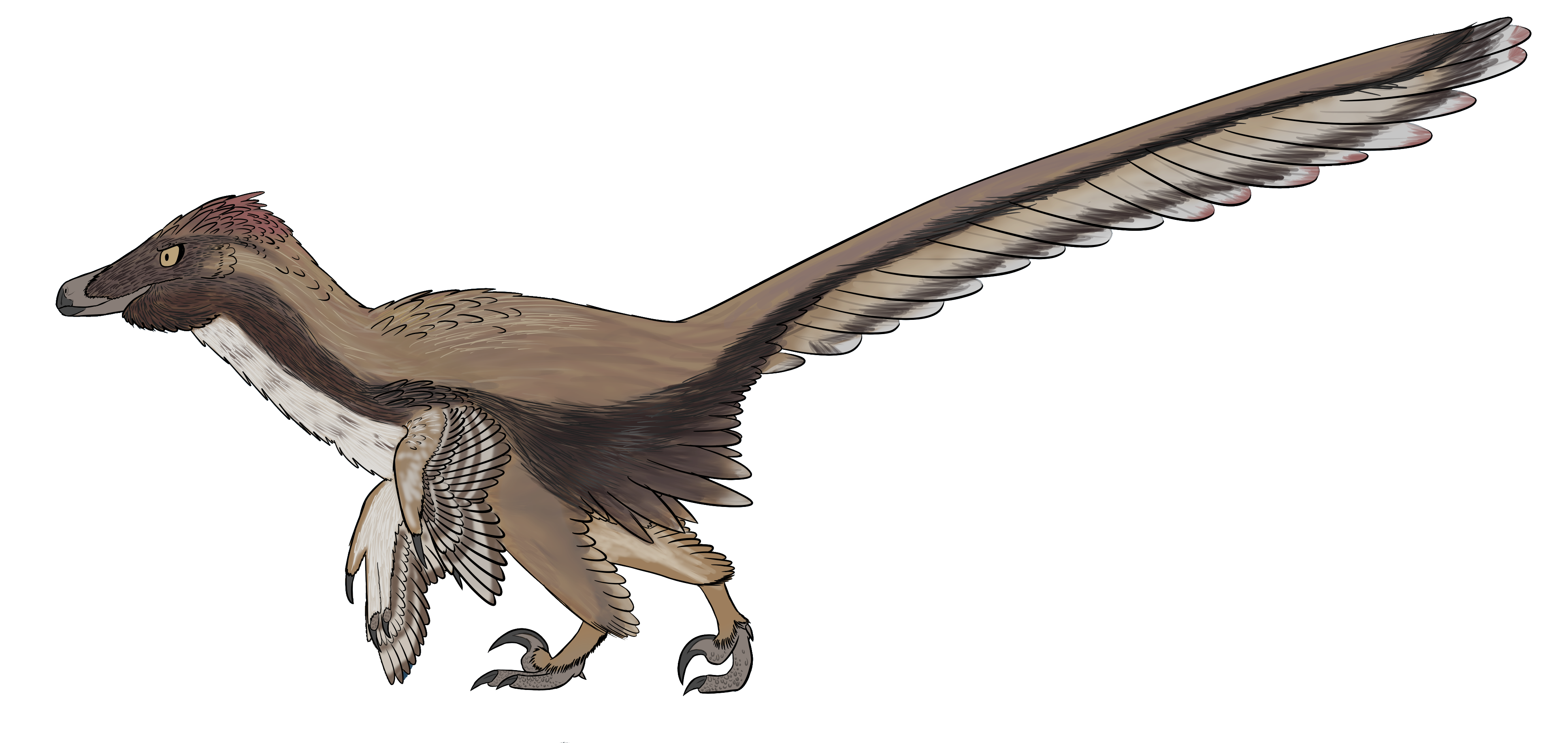Velociraptor

|
|
|
A name everyone knows. Velociraptor is one of the most famous dinosaurs of all time, thanks to a certain movie franchise. Velociraptor has been known since the 1920's, when it was discovered in Mongolia by an expedition from the American Museum of Natural History. While searching for human ancestors, the expedition stumbled upon a wealth of Eocene and Late Cretaceous fossils, including the first fossils of Velociraptor and Protoceratops. Velociraptor is only about a meter tall. It has a low, narrow snout with serrated teeth and a characteristic concave surface on the top. Its arms are moderately-sized, and the ulna has quill knobs, attachment points for large wing feathers. It has an enlarged sickle-shaped second claw on each of the feet, and its tail is stiffened by projections of the vertebrae and ossified tendonds. Velociraptor lived in what is now the Gobi desert, though at the time it would have seen more water than it does now. Many specimens, including the famous "Fighting Dinosaurs" specimen eternally locked in battle with a Protoceratops, were likely buried by sandstorms or collapsing sand dunes. Being a desert-dweller, it may have lived in groups like desert-dwelling birds and canids. Many words have been said about Velociraptor lifestyle and diet. The sickle claw would be rather useless for slashing; rather, it is an effective hook. Eudromaeosaurs like Velociraptor attacked prey in a similar manner to modern birds of prey - by leaping onto it and using its talons to pin the prey to the ground, using wings and tail to stabilize itself and dispatching the prey with its mouth. Velociraptor is no stranger to scavenging, too. A small flock of Velociraptor live in the Mongolia of the Cretaceous exhibit. The group is most active at night. While the flock isn't as organized as a pack of wolves, they do move, eat, and nest together. |
Scientific name Location Time Length Diet |